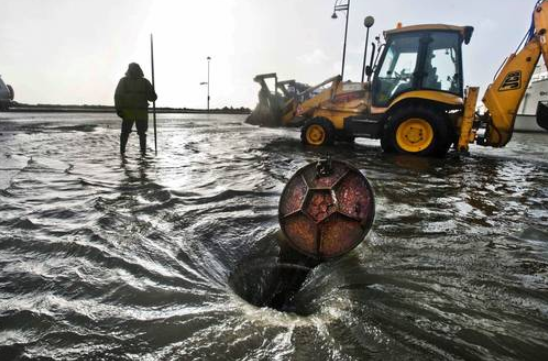How Wastewater Treatment And Microalgae Industries Complement Each Other:

There are several potential uses for microalgae, but using them as a feedstock for biofuel is the most optimistic long-term objective. Numerous microalgae-based products are already well-established in other prestigious industries, such as dietary supplements for humans (nutraceuticals) and a component of animal feed. When it comes to producing microalgae biofuels, major handling improvements and amazing scientific advancements will eventually be needed to achieve financial, ecological, and energetic viability. Microalgae have a huge window of opportunity in wastewater since it can be used to grow them with little to no effort and as a source of another potential market.
Microalgae may successfully discharge a wide range of pollutants from fluid networks according to their diverse feeding strategies (phototrophism, heterotrophy, and mixotrophy). A coupling of wastewater treatment and algal cultivation is possibly the most logical method available for temperate expansive scale generation of micro algal biomass due to the same scale and creation services that both endeavours depend on
Microalgae, a Help to the Wastewater Treatment Sector:
A few studies have shown that using wastewater is essential for the development of the microalgae biofuel sector. The cost of producing microalgae is high today. Real costs are in the range of 100 euros per kilogramme of biomass. For instance, using data obtained over the course of two years of continuous operation, the development cost of a real microalgae generation facility consisting of 30 m3 of tubular photo bioreactors was estimated to be 69 €/kg of dry weight. Spirulina, a remarkable and easy to grow cyanobacteria, is typically marketed in France for between 150 and 200 euros per kilogramme of dry weight. The use of inefficient forms and the small size of operations are the two main factors that contribute to the high cost (economies of scale). Techno-financial extrapolations are used to estimate future costs of considerable scale creation. Studies that rely on theories and the value chosen for the major parameters provide wildly divergent results (for example, lipid efficiency).
Microalgae biodiesel has an estimated generating cost of roughly 2.5 euros per litre. However, these costs are too expensive to compete in the current energy market (0.6 €/L for petroleum diesel) and not aggressive enough to convince the petrochemical industry that microalgae may become a profitable feedstock even over the long term. The ability to lower the generating cost will be the true test of microalgae biofuel production. Limiting the use of mechanical supplements could help because they have a noticeable impact on production costs (between 1% and 10% depending on the process).
Using Microalgae to Treat Wastewaters:
Three different methodologies have been used to evaluate the ability of microalgae in wastewater treatment plants (1) effectiveness of microalgae-based high-rate algal lakes (HRAPs) in treating urban wastewater; (2) ability of microalgae to treat specific wastewaters (horticultural or mechanical); and (3) ability of microalgae to treat a specific toxin (for the most part a micro pollutant or a modern poison). In this section, these three techniques will be reviewed and discussed.
Treatment of Urban Wastewater:
Urban wastewater contains the following three primary toxins: carbon (C), nitrogen (N), and phosphorus (P). Microalgae have a remarkable and well-documented ability to deal with mineral contamination, such as mineralized forms of phosphorus (phosphate, PO43′) and nitrogen (ammonium, NH4+ or nitrate, NO3′). Broad research have been completed since the 1950s by Prof. Oswald and his team at the University of California. For instance, they observed high phosphorus (PO43′- P, 95%-99%) and ammonium (NH4+-N, 85%-90%) evacuation rates in two 1000 m2 pilot-scale HRAPs. Since then, a large number of diverse studies have demonstrated the ability of microalgae to treat urban wastewater and have primarily focused on process intensification.
For instance, urban wastewater treatment has been managed over the long term, and a pilot-scale HRAP operating at four days of water-driven maintenance time has achieved a mean biomass efficiency of 16.7 g/m2/day (highest of 24.7 g/m2/day) (HRT). Microalgae can also slow the natural stacking rate in addition to mineral toxicity (C). Several studies have supported this idea. For instance, in 13 days, a PBR inoculated with Chlorella sp. was able to reduce its synthetic oxygen demand (COD) by 70% (3000 to 400 mgO2/L). In a pilot-scale 16 m2 open lake, a mixture of Chlorella sp. and Scenedesmus sp. could remove 90% of the COD in urban wastewater (from 180 to under 20 mgO2/L). More recently, it has been observed that microalgae can grow on modified carbon substrates in wastewater open lakes, ranging from simple atoms (glucose, lactose) to completely complex ones (a-cyclodextrin, Tween 40 and 80).
Treatment of Industrial or Agricultural Wastewater:
Assessing the ability of some microalgae strains to remove contamination from particular wastewaters (modern or horticultural) that are insufficiently treated using the standard enacted slime prepare is another exploration strategy for the use of microalgae in wastewater treatment. Mechanical wastewaters from molasses-based refineries are produced in large quantities (15 L of effluent are produced for every litre of delivered alcohol) and have high levels of biological oxygen demand (BOD) and carbon dioxide demand (COD) fixation (typical ranges of 40–50 gO2/L and 80–100 gO2/L, respectively). Chlorella sorokiniana was used to reduce the COD of a pH-balanced liquor refinery discharge (pH = 6.0-7.0) from 20 to 1.5 gO2/L in 3 days in a 50 L PBR (with a 95% decrease in nitrate, 77% decrease in phosphate, and 35% decrease in sulphate). Utilizing microalgae, additional mechanical wastewaters can be handled.
Microalgae, for instance, may also effectively treat wastewater from the mash and paper industries. From a weaker mash and paper company wastewater, a group from an adjustment lake could remove up to 58% of COD, 84% of shading, and 80% of absorbable natural incandescent lamp (AOX). Additionally, the use of microalgae to remediate dairy wastewater has been considered. When Chlamydomonas polypyrenoideum was used over the course of 10 days in 250 mL fiasks to treat dairy effluent, the levels of nitrate, alkali, phosphate, and COD could all be reduced by 90%, 90%, 90%, and 60%, respectively. Chlorella sp., when grown on dairy wastewater, could expel COD, total nitrogen (TN), and total phosphorus (TP) at rates of 41.31, 6.58, and 2.74 mg/L/day using an open-air 40L PBR. The effluent from an oil refinery can also be prepared by microalgae: after three days of batch treatment, there was a 97% reduction in ammonium, a 69% reduction in TN, and a 90% reduction in TP. A group of 15 local microalgae that were disconnected from these cover wastewaters successfully prepared the cover wastewaters. In four 950 L raceway lakes, the technique effectively reduced the contamination by TKN (from 32.6-45.9 mg/L to 3.97-5.53 mg/L), PO43′ (from 20.31-35.10 mg/L to 17.59-21.95 mg/L), COD (from 11412 mgO2/L to 106-183 mgO2/L), and BOD (from 331-487 mgO2/L to 2-21 mgO2/L).
Another type of wastewater, called corrosive mine seepage (AMD), seriously pollutes the environment in countries with active or historic mining industries. To treat AMD, pilot-scale investigations in 1 m3 organic treatment test cells have been carried out. A cyanobacteria-microbial consortium was used to create a microbial tangle in a substrate made of soil, wood chips, and powdered goat poo. Metals showed encouraging expulsion rates: 95% for Fe, 79%-97% for Cu, 84%-86% for Zn, 88% for Pb, 59%-83% for Co, 22%-62% for Ni, and 28%-45% for Mn. Additionally effective for treating rural wastewater are microalgae. For instance, 97 strains were tested to handle wastewater from swine fertiliser that had been degraded by 20 fold. In a two-stage culture, two of them were selected and approved (development rates of 0.536 and 0.433 d’1) (first mixotrophic and afterward photoautotrophic). Although phenolic mixtures hampered the depollution, olive factory wastewaters can also be treated using microalgae, such as Scenedesmus sp.
Read More: What Professional Waterloo Plumbing Services can Offer You?




